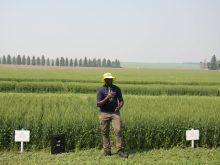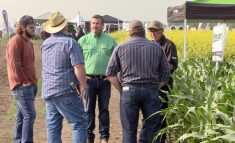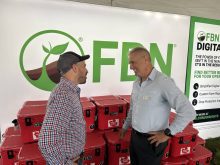Commissions learn that many farmers follow basic 4R principles, but few employ more advanced application measures
Wheat commissions in the prairie provinces are mulling over the findings of the first spring wheat nitrogen fertilizer use survey since 2016.
“With increased conversation around fertilizer use at a federal level, we thought there would be value in understanding how producers may be using fertilizer,” said Jeremy Boychyn, agronomy research extension specialist with the Alberta Wheat Commission.
Fertilizer Canada surveyed 544 farmers between Nov. 1, 2021, and Dec. 27, 2021. The survey was funded by the wheat commissions and will continue in 2022 and 2023.
It determined that 84.4 percent of farmers in Western Canada apply their nitrogen at seeding time, while 18.2 percent do it in the fall. The total does not add up to 100 percent because some farmers fertilize in both spring and fall.
Read Also

Alberta eases water access for riparian restoration
Alberta government removes requirement for temporary diversion licence to water plants up to 100 cubic metres per day for smaller riparian restoration projects
Boychyn said much of the fall application is anhydrous ammonia, which needs to be applied at certain temperatures.
“In the spring, the logistics of getting that much nitrogen down can be a challenge,” he said.
An estimated 42.9 percent of the total acres were mid-row banded in the spring, 30.9 percent were side banded, and 1.1 percent received nitrogen at spring seeding as a broadcast with no incorporation. Another 6.3 percent was applied before seeding.
That compares to 11.8 percent banded in the fall, 1.8 percent broadcast with incorporation and another 2.5 percent broadcast without incorporation.
The results indicate that 62.9 percent of farmers use the same blend for every spring wheat field they plant, while 22.4 percent tailor fertilizer blends to field-specific needs and 14.7 percent use variable rate on some or all fields.
An estimated 61.4 percent of spring wheat acres met a basic level of 4R Nutrient Stewardship management criteria but there is little adoption of advanced 4R practices. In-crop nitrogen application occurs on 1.2 percent of acres. Only 7.9 percent receive a nitrogen stabilizer and 6.3 percent of the nitrogen applied is ESN or SuperU.
Fertilizer Canada recently released a study showing that a 14 percent reduction in nitrogen fertilizer-related greenhouse gas emissions could be achieved by 2030 if there were wider adoption of those advanced practices.
Adoption levels would need to be 26 to 45 percent in Eastern Canada and 28 to 50 percent in Western Canada.
Boychyn said there are a variety of reasons why there hasn’t been more widespread adoption of advanced fertilizer practices.
In some cases, growers may not have the proper equipment. In others, environmental conditions may not be conducive to adoption. For instance, there may not be enough variability in a field to warrant variable rate applications.
Some growers may not have taken the time to investigate the benefits of advanced 4R practices.
“It needs to be looked at no different than any other practice,” said Boychyn. “Farming is a business and economics is going to play a big role in adoption of these things.”
He is eager to see the results from the 2022 survey that will be conducted this fall. Boychyn wonders what impact sky-high fertilizer prices and very different weather conditions had on fertilizer use in 2022.


















